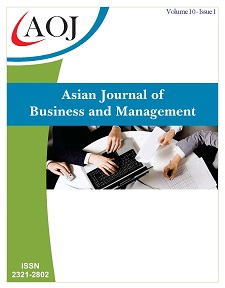Tax-Return Screening Inefficiency of the Internal Revenue Service: What can be done to Increase Compliance and Detection of Erroneously Claimed Educational Credits?
DOI:
https://doi.org/10.24203/ajbm.v10i1.6847Keywords:
Tax-Return Screening Inefficiency of the Internal Revenue Service: What can be done to Increase Compliance and Detection of Erroneously Claimed Educational CreditsAbstract
On January 31st, 2018, Treasury Inspector General for Tax Administration (TIGTA) issued a report examining the effectiveness of the agency specifically under the 2017 Tax Filing Season. The report is referenced as 2018-40-012. According to the report, during 2017 tax filing season, billions of dollars in potentially erroneous American Opportunity Tax Credits Continue to be issued. As noted in the TIGTA report, 1.2% of the returns filed during 2017 tax season contained an error and resulted in improper refunds due to American Opportunity Tax Credit error alone. This is a significant error on the part of the Internal Revenue Service that creates inefficiency and under-collection of revenue. This paper will identify possible solutions to the issue that could increase in the revenue as much as $2.8 billion on annual basis
References
NA
Downloads
Published
Issue
Section
License
Copyright (c) 2022 Asian Journal of Business and Management

This work is licensed under a Creative Commons Attribution-NoDerivatives 4.0 International License.
- Papers must be submitted on the understanding that they have not been published elsewhere (except in the form of an abstract or as part of a published lecture, review, or thesis) and are not currently under consideration by another journal published by any other publisher.
- It is also the authors responsibility to ensure that the articles emanating from a particular source are submitted with the necessary approval.
- The authors warrant that the paper is original and that he/she is the author of the paper, except for material that is clearly identified as to its original source, with permission notices from the copyright owners where required.
- The authors ensure that all the references carefully and they are accurate in the text as well as in the list of references (and vice versa).
- Authors retain copyright and grant the journal right of first publication with the work simultaneously licensed under a Creative Commons Attribution License that allows others to share the work with an acknowledgement of the work's authorship and initial publication in this journal.
- Authors are able to enter into separate, additional contractual arrangements for the non-exclusive distribution of the journal's published version of the work (e.g., post it to an institutional repository or publish it in a book), with an acknowledgement of its initial publication in this journal.
- Authors are permitted and encouraged to post their work online (e.g., in institutional repositories or on their website) prior to and during the submission process, as it can lead to productive exchanges, as well as earlier and greater citation of published work (See The Effect of Open Access).
- The journal/publisher is not responsible for subsequent uses of the work. It is the author's responsibility to bring an infringement action if so desired by the author.


